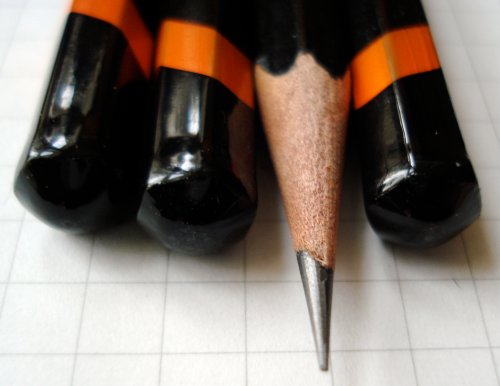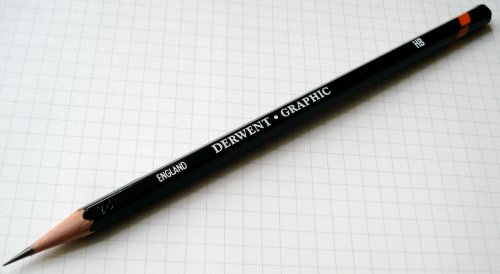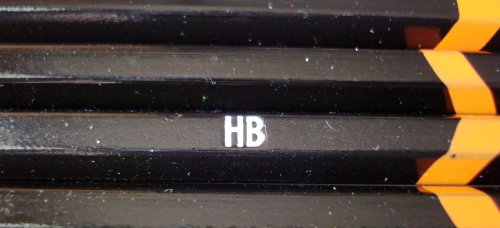It is a bit of a shock to realize that this website has existed for so many years without offering a single article on a product from this particular manufacturer. With a location near the original Borrowdale graphite mine and the beginnings of the lead pencil industry, as well as offering a broad and internationally distributed line of premium pencils, Derwent is one of today’s top manufacturers.
Derwent was established in Keswick in 1832. This is in the region of the mine where graphite was discovered. (See Petroski’s The Pencil for further information.) The location cannot be random, and it seems reasonable that there is some link back to the original mine.
The company today is owned by global conglomerate ACCO (originally “American Clip Company”), who have wisely left the brand unaltered. The ownership has continued to invest in production as well as support the company history and heritage through the sponsorship of the Cumberland Pencil Museum. Contrast this with how Sanford has treated acquisitions!
Derwent today offers over a dozen full lines of artist oriented pencils, plus many other media and accessories. They have all the traditional media in woodcased pencil form – graphite, wax colour, charcoal, and chalk pastels. Plus they offer all of these in a huge number of format permutations.
In woodcased graphite pencil form, the following are offered:
Graphic – a range of hexagonal pencils in twenty degrees, from 9H to 9B. We’ll look at the HB today.
Sketching – HB, 2B, and 4B round pencils with oversize cores. Very waxy, we’ll look at these another day. I think many people will like them!
Watersoluble Sketching – HB, 4B, and 8B round pencils with oversize water soluble cores. They seem drier than other watersoluble pencils I have tried.
Onyx – a new line, apparently very dark and saturated.
Lakeland Graphite – a student range which I’ve unfortunately never seen.
Cumberland Graphite – a general purpose range.
Rexel Office Pencil – the Derwent website says, “It does the job you expect it to.” Again, I haven’t seen this pencil.
Do you know any of this range? Do you live near the Lake District?

Name: Derwent Graphic.
Full name and model no: Derwent Graphic.
Manufacturer: Cumberland Pencil Company, part of ACCO UK Ltd.
Background: See above.
Weight: 3.7g – possibly the lightest modern quality pencil.
Dimensions: Rounded hexagon with finished cap. Standard (~175mm) length.

Appearance: The pencils are hexagonal and sharpened. The pencil finish is black, with white imprints and a geometric orange stripe. The lacquer seems very light. The basic black colour scheme may contribute to this appearance. Different pencils purchased at different stores seem to vary, but the lacquering generally seems quite “bargain” rather than “premium” to me. The stinginess with the paint might be an aspect of the pencil’s light weight.
The pencil is marked:
England Derwent Graphic HB
Other notes: The minimal marking on the pencil and absence of a bar code are a nice change of pace.
Grip: It is a fairly standard pencil.
Sharpening: Using cedar (less common in 2010), the pencil offers a superior sharpening experience.
Writing: There are a lot of possible reasons for choosing a pencil. Some criteria, such as reaction to atmospheric humidity – which I do see as a reasonable measure – require either specialized equipment or years of study to detect. I can’t comment on these aspects. But as a smooth writer with dark precise lines, it just doesn’t compare with a pencil like the Mitsubishi Hi-Uni. Against the Castell 9000, it seems possibly better in some ways, and worse in others. So it belongs in the graphite pencil Formula 1 season, but won’t win pole position most days.
Erasure: On Rhodia paper, a Pilot Foam erased very well. A Factis Extra Soft ES20 has a couple of challenges.

Overall: I’m glad that Cumberland and their Derwent brand are thriving. Yet as a potentially top-tier pencil, I find the lead of the Graphic not quite good enough. Industry officials have stated that a pencil’s core may be 10% of the cost and the finish 33% of that cost. The Graphic already has a very modest finish – barely acceptable, in fact. Cumberland should put some of their lacquer/paint savings into the graphite/clay/wax core. Globalization is the challenge, and there are some very good competitors out there.
Weblogs suggest there are a number of UK readers who may know Derwent – what do you think?
